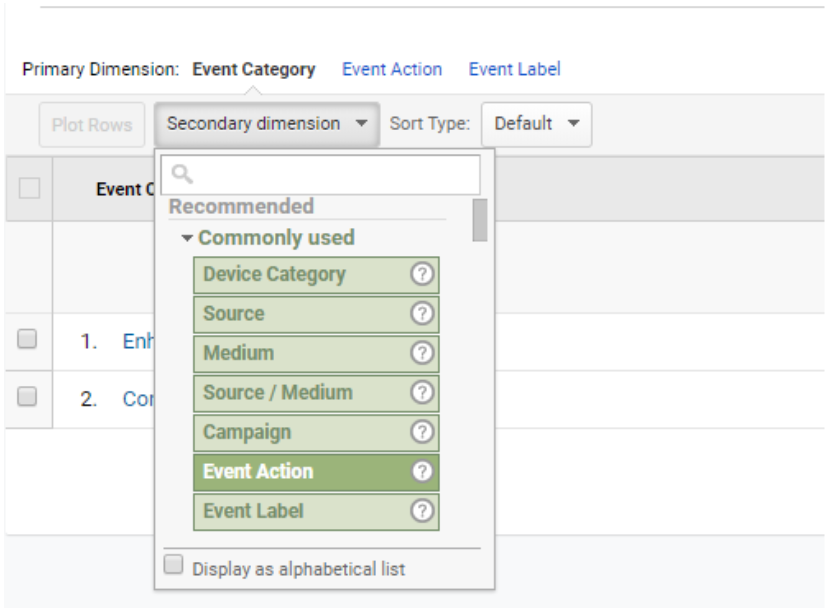Optimizing Data Analysis: Google Analytics Secondary Dimension Explained
Wiki Article
Unlocking the Power of Additional Dimension Analytics for Enhanced Data Insights and Decision-Making
In the world of information analytics, primary measurements often take the spotlight, yet the true depth of insights exists within the world of second measurements. By using the power of additional dimension analytics, companies can introduce covert trends, reveal connections, and extract more significant final thoughts from their information.
Relevance of Second Dimensions
Discovering the value of additional dimensions in analytics reveals the concealed layers of data insights vital for informed decision-making in different domains. Secondary measurements give a much deeper understanding of primary data by supplying added context and perspectives. By integrating additional dimensions into analytics, companies can draw out more thorough and nuanced understandings from their datasets.One trick value of additional measurements is their capacity to sector and categorize primary data, permitting an extra comprehensive evaluation of particular subsets within a dataset. When looking at the data as a whole, this segmentation enables organizations to recognize patterns, patterns, and outliers that might not be evident. In addition, second dimensions assist in revealing connections and dependencies between various variables, causing more exact forecasting and anticipating modeling.
Furthermore, second dimensions play a vital function in improving data visualization and reporting. By adding second measurements to visualizations, such as charts or graphs, experts can produce extra informative and useful depictions of information, helping with better communication of findings to stakeholders. On the whole, the combination of secondary measurements in analytics is critical in unlocking the full possibility of information and driving evidence-based decision-making.
Trick Benefits of Utilizing Secondary Dimensions
Making use of additional measurements in analytics offers companies a critical advantage by enhancing the depth and granularity of data insights. One key advantage of integrating second measurements is the ability to section and filter data, permitting an extra comprehensive evaluation of particular elements within a dataset. This segmentation makes it possible for organizations to acquire an extra nuanced understanding of their audience, efficiency metrics, and other essential data factors. By dissecting information making use of secondary dimensions such as time, place, gadget type, or user demographics, organizations can uncover patterns, trends, and connections that may otherwise remain covert.Furthermore, the use of secondary measurements enhances the context in which key information is interpreted. It provides a more extensive sight of the connections in between various variables, allowing companies to make enlightened choices based on an extra all natural understanding of their data. Additionally, second measurements help with the identification of outliers, abnormalities, and areas for optimization, inevitably resulting in extra efficient approaches and boosted results. By leveraging additional dimensions in analytics, companies can harness the full possibility of their data to drive better decision-making and achieve their business goals.
Advanced Information Analysis Techniques
A deep dive right into sophisticated information evaluation strategies discloses advanced methods for extracting useful insights from intricate datasets. One such strategy is artificial intelligence, where algorithms are utilized to determine patterns within data, forecast results, and make data-driven choices. This method permits for the automation of analytical design building, allowing the processing of big volumes of data at a faster rate than conventional techniques.Another innovative technique is predictive analytics, which makes use of analytical algorithms and machine learning methods to anticipate future results based upon historical data. By assessing patterns and fads, businesses can prepare for customer habits, market patterns, and potential threats, equipping them to make positive choices.
In addition, text mining and belief evaluation are beneficial methods for extracting understandings from unstructured information resources such as social media comments, client evaluations, and survey feedbacks. By evaluating text information, organizations can understand customer opinions, identify emerging patterns, and enhance their services or products based on feedback.
Enhancing Decision-Making Via Second Measurements

Enhancing decision-making with second measurements makes it possible for organizations to make even more educated and targeted calculated choices. For instance, by segmenting consumer data based upon secondary dimensions like acquiring background or involvement levels, firms can customize their marketing methods to particular target market sections, resulting in improved conversion prices and consumer satisfaction. Second dimensions can help determine correlations and connections between different variables, allowing companies to make data-driven choices that drive development and profitability.
Executing Secondary Dimension Analytics
When including additional measurements in analytics, companies can unlock much deeper insights that drive critical decision-making and boost overall efficiency. Executing additional dimension analytics needs an organized method to make Check This Out sure effective application of this powerful device. The very first step is to determine the key metrics and measurements that line up with the company's critical objectives. This entails comprehending the details inquiries the organization looks for to respond to and the data my response points needed to address them.Additionally, companies need to take advantage of advanced analytics devices and modern technologies to enhance the procedure of integrating secondary measurements. These tools can automate information handling, evaluation, and visualization, permitting organizations to focus on translating insights instead than hand-operated information manipulation.
Final Thought
In conclusion, secondary measurement analytics play a critical duty in enhancing data insights and decision-making procedures. By using advanced data evaluation techniques and applying secondary dimensions successfully, companies can unlock the power of their data to drive tactical business choices.In the realm of data analytics, primary dimensions typically take the limelight, however the true depth of insights lies within the world of secondary measurements.Utilizing secondary dimensions in analytics provides organizations a calculated benefit by enhancing the depth and granularity of information insights. By leveraging description second dimensions in analytics, companies can harness the full possibility of their data to drive better decision-making and achieve their business goals.
Implementing information validation processes and normal audits can help preserve information quality and dependability.
By making use of sophisticated data analysis techniques and carrying out secondary measurements efficiently, companies can unlock the power of their data to drive critical business decisions.
Report this wiki page